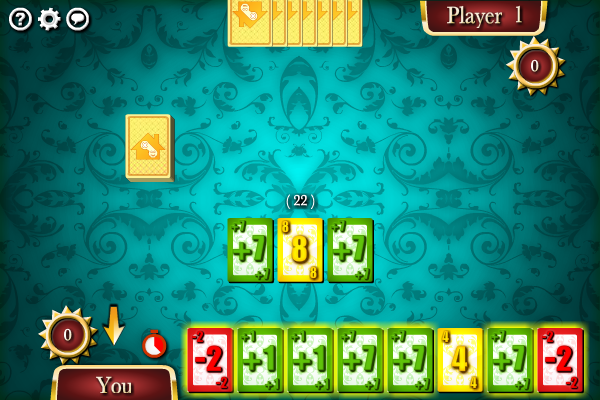Prime Cards
- Category
- Games
- Card Games

- Developer: Novel Games Limited
- Home page: www.novelgames.com
- License type: Free
- Size: 265 KB
- Download
Review
Gather the brainy ones and play the arithmetic tricks! Your goal in the game is to make use of the cards to form prime numbers before your opponent does. The game uses 60 cards, which are divided into two categories, namely composite cards and operation cards. The following shows these cards with their quantities stated in the brackets: composite cards are 4 (x10), 8 (x4), 10 (x4), 20 (x2), 25 (x2), 26 (x2), and the operation cards are -2 (x12), +1 (x12), and +7 (x12). When the game starts, 7 cards are dealt to each player. The remaining downturned cards serve as the stock pile on the left of the table, while the topmost card on the stock pile will be upturned and placed on the table. Each player has a scoreboard on their left side, while a timer is placed on the right of the scoreboard to indicate the remaining time for each move. Based on the upturned card, the first player begins his turn by drawing a card from the stock pile and plays a card from his hand. If the upturned card is a composite card, the player must play an operation card; otherwise he must play a composite card. The player needs to discard a card if he cannot play any card and the turn will be passed to the player on his left. The current sum of the cards on the table is shown in the bracket on top of those cards. If a player plays a card that forms a prime number with the cards on the table, he wins the trick and scores points same as the value of the prime number. The cards that form the prime number will be removed from the table, and the player who wins the trick starts the next turn by placing any card from his hand onto the table, then draws a card from the stock pile and ends his turn. A trick must be composed of a single composite card and at least one operation card. Once a composite card is placed onto the table, all other players cannot play any other composite cards in the same trick. If the stock pile is used up, all cards except those in the hands of the players are collected